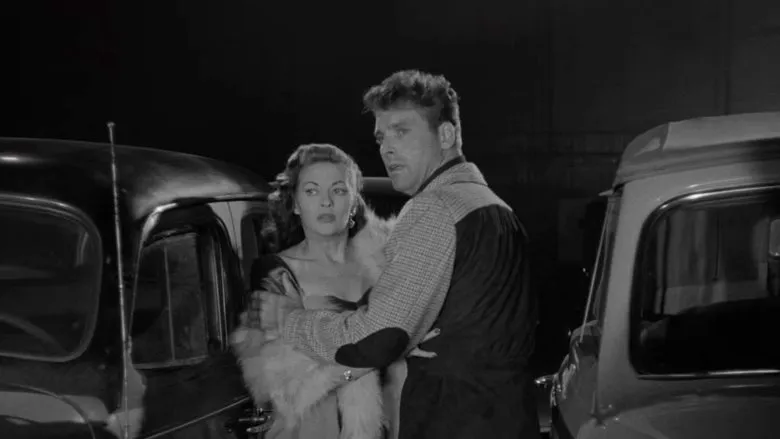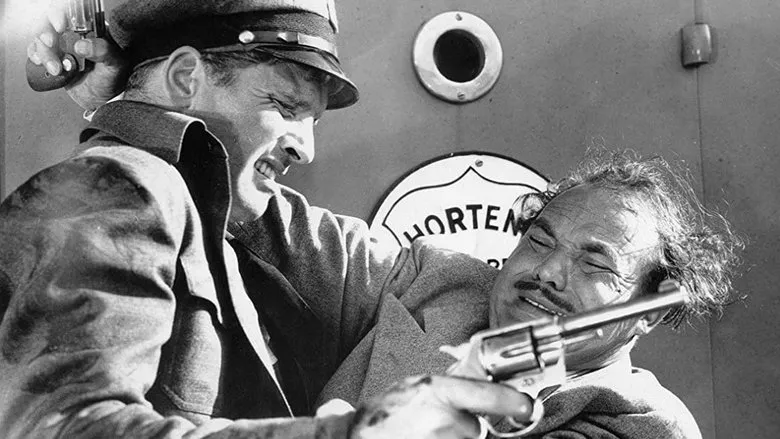Echoes of Bullets and Rain: A Deep Dive into John Woo’s “The Killer”
The soft drumming of rainfall outside my window invariably conjures images of the intense and balletic gunfights that define John Woo’s seminal action film, “The Killer.” This 1989 Hong Kong masterpiece, brought to life by the unforgettable performances of Chow Yun-fat, Sally Yeh, and Danny Lee, not only revolutionized the action genre but also earned widespread critical acclaim, cementing its place in cinematic history. Its influence can still be felt in action films today.
“The Killer” is, at its core, the story of Ah Jong (Chow Yun-fat), a highly skilled assassin whose world is thrown into chaos when he accidentally blinds Jennie, a nightclub singer. Consumed by guilt and a sense of responsibility, Ah Jong embarks on one final, high-stakes hit to secure the funds necessary for Jennie’s corneal transplant. All this while, he is relentlessly pursued by Detective Li Ying, a determined officer of the law. However, beneath the bullet-riddled surface and the high-octane action lies a profound exploration of complex moral dilemmas and notions of justice.
A Tapestry Woven with Morality and Compassion
From the outset, Ah Jong is presented as a character of deliberate contradictions. He is a professional killer, cold and efficient in his work, yet he possesses a surprising capacity for compassion. This is perhaps most evident in his act of saving a young girl from harm, demonstrating a moral compass at odds with his profession. He goes so far as to promise Detective Li Ying that, in the event of his death, his corneas should be donated to Jennie, a testament to his profound sense of remorse and willingness to atone.
Detective Li Ying’s perception of Ah Jong undergoes a significant transformation throughout the film. Initially driven by animosity and a desire to bring him to justice, Li Ying gradually develops a grudging respect for the assassin, eventually leading to cooperation and even a deeper understanding of Ah Jong’s motivations and character.
In the film’s emotionally charged climax, Ah Jong is tragically blinded by gunfire. In a heart-wrenching moment, the wounded Jennie crawls towards him in the darkness, their connection transcending the violence that surrounds them. As the triad boss is apprehended by the police, Li Ying makes a difficult ethical decision to fatally shoot him, recognizing that the formal structures of the law cannot offer appropriate justice for someone like Ah Jong, blurring the lines between right and wrong.
Nuances in Villainy
The film truly shines in its nuanced and multi-layered portrayal of its characters, even those who might initially be classified as villains. Wong Hoi, the triad leader, for example, initially threatens to punish Ah Jong for being exposed during a hit, thus jeopardizing his organization. However, he is visibly shaken and remorseful after Ah Jong is blinded in the process, suggesting a flicker of humanity beneath his hardened exterior.
Consider also Ah Jong’s manager, Four, who is brutally attacked while delivering money to a church on Ah Jong’s behalf. This act of violence ultimately leads to Ah Jong’s agonizing decision to end Four’s suffering, a testament to the complex web of loyalty and sacrifice that permeates the film.
Woo’s Vision: Action Elevated to Art
John Woo’s distinctive directorial style was groundbreaking at the time. The elaborately choreographed shootout sequence within the abandoned church, which reportedly took a remarkable 36 days to film, stands as a testament to his dedication and vision. The film’s production was also marked by unexpected twists as well. Due to scheduling conflicts with Sally Yeh, Woo was compelled to rewrite the ending, which culminated in the poignant and iconic scene of Chow Yun-fat playing the harmonica, adding an unexpected layer of emotional depth to the narrative.
Beyond Bullets: A Meditation on Justice and Humanity
“The Killer” transcends the limitations of a typical action film, evolving into a profound exploration of fundamental themes such as humanity, morality, and the elusive nature of justice. It compels viewers to confront complex questions about the meaning of justice and the spectrum of good and evil. These are not easily answered, and each individual must grapple with them on a personal level.
Each character in the film operates according to their own distinct set of motivations, fighting for what they believe to be right within the context of their own world. The police, the triads, the assassin, the singer – their diverse worldviews and values create a rich and intricate tapestry of human experience. Woven throughout this tapestry are threads of love, friendship, hatred, and betrayal, resulting in a complex network of relationships and conflicts.
At times, the lines between right and wrong become increasingly blurred. This forces viewers to confront their own moral compass, questioning their assumptions and re-evaluating their values.
“The Killer” stands as a significant cinematic achievement, reaching its zenith in its seamless integration of action, emotion, and philosophical themes. Every detail resonates with a sense of authenticity. Every character is imbued with a unique and unforgettable soul. It’s more than just an engaging and thrilling action film, it is a work of art that provokes introspection and challenges our values. The questions it raises extend beyond the confines of the screen and into the realities of our daily lives. Ultimately, it reminds us that even in the darkest of times, a flicker of hope remains. Like Ah Jong and Li Ying, we can find solace and self-discovery amidst the shadows.